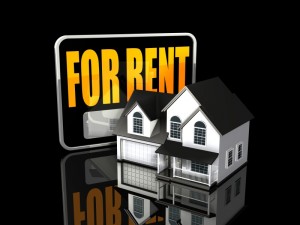It occurred to me recently that within the next three to seven years there is going to be another crash in the housing market. This time it will not be caused by banks being over leveraged, real estate speculation, or the ineptitude of government. The cause will be new technology, and new manufacturing techniques. Use of technologies similar to Contour Crafting will reduce the cost of constructing a new home substantially. In many cases there will be a 60 to 85 percent decrease in the cost of a new home.
http://http://www.youtube.com/watch?v=JdbJP8Gxqog
The resulting lower new home prices will devastate the existing homes market. Given the option people will more than likely purchase a home, custom printed to order, with 3 to 5 times the floor space, or opt for new home of the same size at greatly reduced cost. This great disparity in price will carry over to the banking sector, as existing homes become less desirable and difficult or impossible to sell. In the end, the likely results will be existing houses being sold for square foot price equivalent or below that of the newer 3 D printed houses. Over time 3D home printing technology will mature and becomes less expensive. Competition, optimization, and newer technologies will drive prices down even further. Leading to a reduction in new home prices over a period of several years. Towards the end of this downward spiral, many of the old existing homes, will more than likely be sold for their raw land value as people begin consider them boxy, ugly, inefficient energy guzzlers, and undesirable.

With 3 D printing, complex custom houses can be built for the same price, and in the same time, as simple houses with the same floor space. This will end the era of all houses in a development looking identical.
The banks carrying loans on existing homes, that were built by hand, will be dragged down as people opt to purchase new homes that cost substantially less, or have many times the floor space. No amount of government intervention will be able to repair the damage, or save the banks owning these mortgages. This will be a multi-year housing price depreciation, which will also place downward pressure on the prices of the first several generations of houses built using 3 D printing. This fall in housing prices will continue until the automated creation of houses has been fully optimized, and profit margins become extremely slim.
The banks can’t win this one, and neither can landlords. With the continued downward pressure on home prices, will also come a downward price pressure on rents. Landlords with existing rental properties, will find it extremely difficult to rent their properties at a profit, or sell the properties, bankrupting many of them as people move into newer, more efficient, prettier, and less expensive accommodations.
All in all, this one technology is going to cause a serious reallocation of wealth across the entire planet, destroying many current industries and creating many new ones.

Every new advancement brings with it a certain amount of societal upheaval however, in this and in most cases the benefits far outweigh the negative possibilities. Yes there wil be some lost jobs in the construction industry, but the savings realized by a vastly greater number of people in the form of decreased housing costs make this one of he most exciting and potentially liberating technologies for our future.
You seem to have some very limited knowledge of economics, and the history of the “housing bubble”.
Let us take the latter case first. The so-called “housing bubble” of the last decade, or rather the “fiscal crisis”, was a direct (and probably intended) result of Government meddling in the housing markets, mostly at the behest of the Democrat Party, though there are certainly enough blame to go around for both partys. Schemes, or should I say “Scams”, like the Community Reinvestment Act are essentially Marxist inspired redistribution programs designed to stealthy further the Democrat’s communist agenda, grab power for the federal government, and, of course, buy votes (this last case being where the Republican’s moral turpitude comes in). It has nothing at all to do with the cost of construction per se. In fact, through government meddling, the cost of construction was in effect artifically “disocunted” out of the economic model.
To manage the risk involved, all manner of derivatives were used. Note that these where used mostly by the large money center banks, or bank like institutions on what we call “Wall Street”; they were not used by the “Main Street” bank that in fact to most of the retail. lending in the residential housing market.
Two, I do not know why you want landlords to “go bankrupt” as they are mostly decent people. Here you reflexively echo Marxist cant. More to the point, the price of house has to do with supply and demand, and that has to do with both demographics and the broader state of the economy. Having cheaper construction cost alone does not change thi much. A building that is 50 years old has pretty much had its construction cost paid off; other market forces are in play.
Lastly, it the broader sense, you have to prove that this sort of technology infrastructure do not increase costs in other areas, and that this cost invalidates your thesis that housing is cheaper.
As an aside, you are really stretching matter to jump to the conclusion that this the will allow you to fabricate an English manor house, as per your illustration.
You understand that they are not just made of stones piled on top of each other, right.
I fear that here too, as in matters of economics, you knowledge is somewhat limited and thus you reach unwarranted conclusions, not to mention grandiose ones.
The housing bubble was caused by an over leveraging on the side of the banks, poor federal regulations, cheap insurance on property failure, overly complex financial instruments, and credit rating shopping at accounting houses. I could go on, but I won’t there are just to many individual lead ups to the failure.
To answer most of your other points … Huge robot pours concrete, installs the flooring, plumbing, electrical, windows, doors, and paints the walls. As it is 3D printing the house it shapes the outer walls to look like cut stone. Like magic in a day or two English manor house. The costs become set up and material costs which are far below current norms.
About the failure of the landlords, it is economics 101. Someone provides the same item for less you buy the item that costs less. If you add value like free electricity, heat, and AC it only accelerates peoples adoption.
Pingback: Of Nanotechnology, David Fuchs and I | elcidharth
Special weblog! I discovered this you’ll need on Aol News. Have just about any techniques to acquire listed in Askjeeve Media? I am trying for quite a while on the other hand certainly not appear to reach one’s destination! Thank you
Remarkable! Its in fact awesome paragraph, I have got much clear idea regarding from
this post.
my blog – funny pics and quotes
Thanks for giving your ideas. I’d also like to say that video games have been at
any time evolving. Technology advances and innovative developments have helped create
practical and interactive games. These kind of entertainment video games were
not really sensible when the concept was being tried.
Just like other designs of technological innovation, video games also have had to evolve through many many
years. This is testimony for the fast growth of video games.
Here is my homepage; angry birds spielen online
I was having the same thoughts about house values being driven way down within the next 10 years as a result of this technology. It makes me think vacant land in the right location might be a good investment as people would have more money available to spend as a result of far cheaper cost of building. 3d printing could result in brand new communities popping up in agricultural areas as it may be much simpler and cheaper than tearing down homes that are relatively new, but lack the many advantages that a 3d printed home would have. It seems futuristic, but if you have a look at what robots are capable of today and what 3d printing tech is capable of today I think 10 years is more than enough time to see a big disruption. As the technology matures and big corporations realize the market potential we should see the quality improve and the prices continue to fall. Just my 2 cents. Only time will tell.